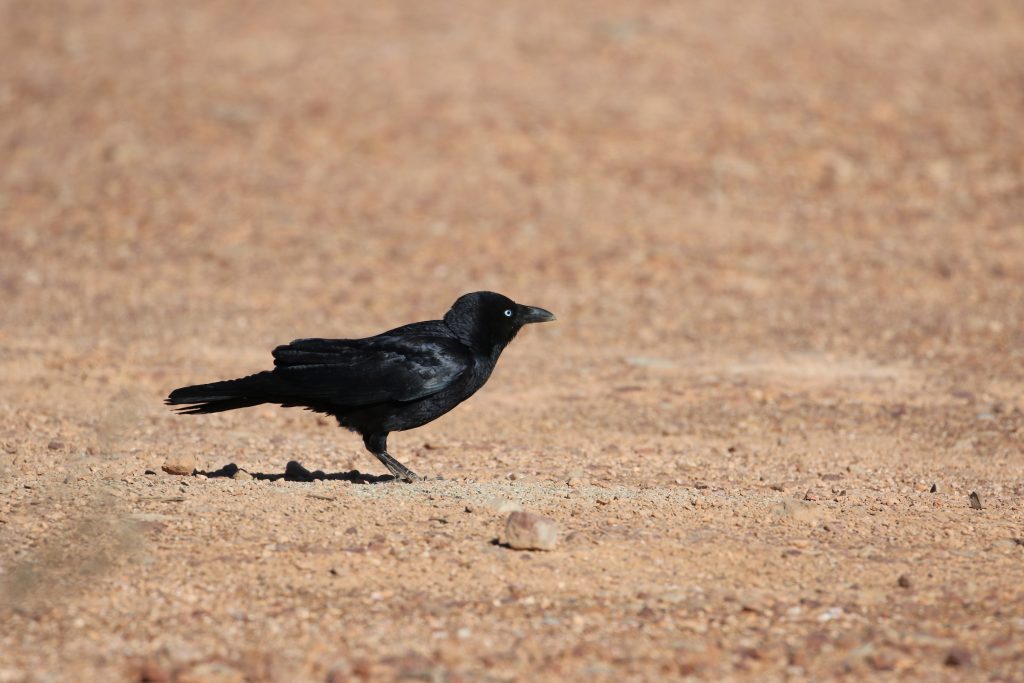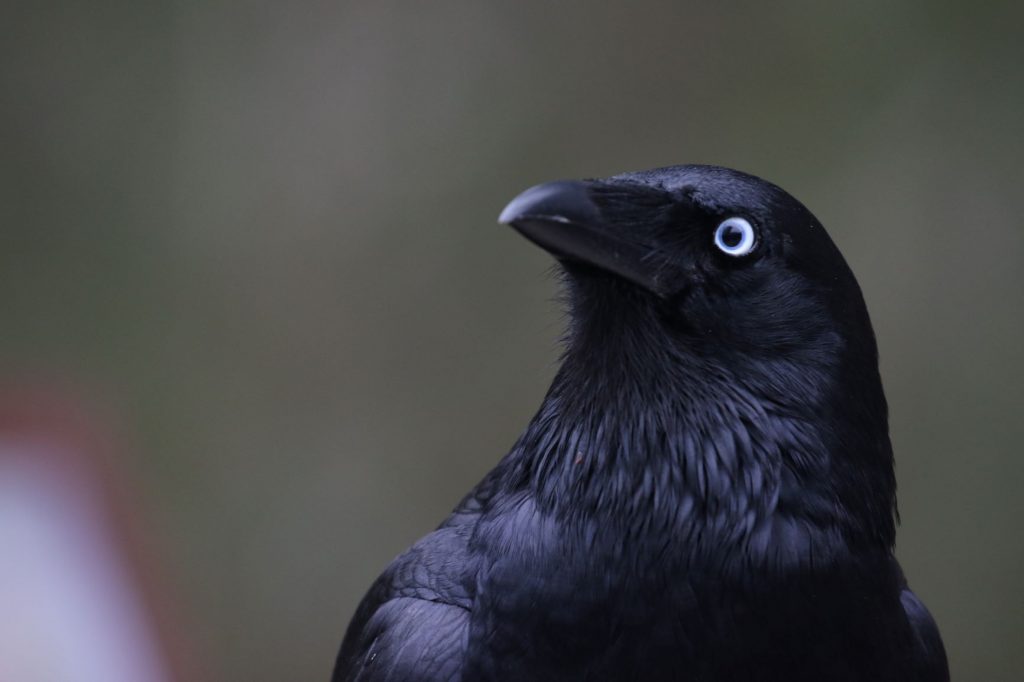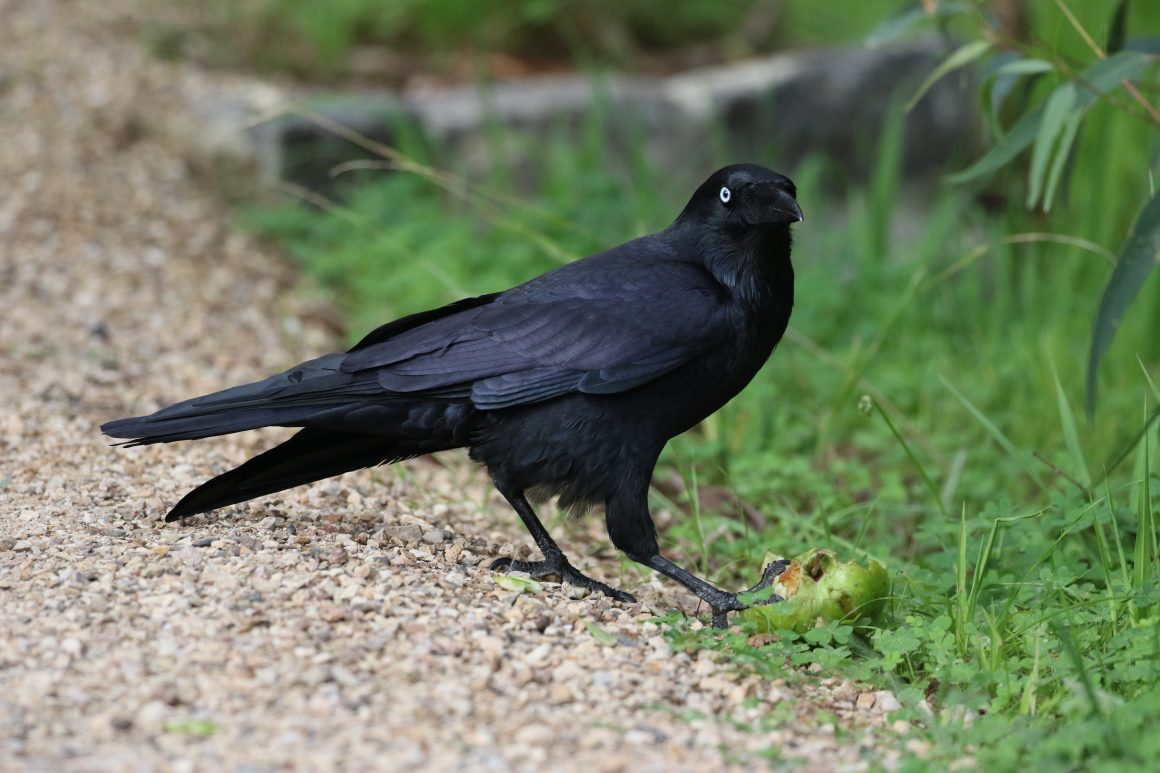Looking back through humanity’s history, corvids (that is, ravens and crows) have often been viewed with suspicion and mistrust. Due to their robust build, deep black plumage, harsh vocalizations, and scavenging habits, these birds were typically believed to be bad omens of war, plague, witchcraft, and misfortune. It really is no wonder our collective nouns for them remain so ominous: a murder of crows and an unkindness of ravens.
Yet these bleak labels do great injustice to what is a remarkable group of birds also renowned for their intelligence, adaptability, flexible behaviour, and social learning. No matter the myths, legends, and superstitions, there is much to be admired when it comes to corvids.
Australia is home to five native corvid species: two crows and three ravens. They are all closely related and look quite similar. Strictly speaking (in Australia at least), the difference between the two is that crows have white on the bases of their feathers, whereas ravens have grey on their bases. However, as this detail is almost imperceptible in the field, the species are most readily distinguished by differences in geographic range and variance in their calls.
They have excellent problem solving skills
Corvids have one of the largest brain-to-body size ratios of any bird and are considered to be one of the most intelligent animal groups on the planet. In one experiment, ravens were presented with a piece of string that had meat attached at the end. The only way to get the food was to pull the string up with their beak, hold it down with their foot, and then pull again, repeating this motion until they reached the meat prize.
Not only did many ravens succeed when presented with this novel challenge, but some individuals were able to execute the procedure perfectly in their first attempt. This suggests they were able to decide on the appropriate course of action by thinking through the possibilities, rather than relying on trial and error.
Here in Australia, Torresian Crows were also one of the first animals that learned how to consume cane toads safely: by flipping them on their backs and eating them from the belly-side up, thereby avoiding the poison-secreting dorsal glands.

They can recognise and remember human faces
Crows are able to distinguish facial features and thus remember dangerous individuals. Researchers donned a unique mask while they captured and released wild crows. In subsequent encounters up to 5 years following the event, the released birds would mob and use harsh vocalizations to ‘scold’ individuals seen wearing the mask.
In addition, researchers observed scolding behaviour in many more birds than those initially captured. This suggested that the crows were learning to recognise dangerous individuals from their parents and flock mates, rather than relying only on personal experience.
They cooperate and have a sense of fairness
In one study, captive ravens were presented with a task that required mutual cooperation in order to obtain a desirable food reward: cheese. In 66% of trials, the ravens worked together to solve the task. When they were then given the cheesy reward, a particularly greedy raven would sometimes quickly eat both pieces thereby depriving their partner of their reward. In this case, the partner was less willing to collaborate with the cheater in the future. Interestingly, the cheater was not fazed by the subsequent lack of motivation in their partner and only became more likely to cheat again in the future!
Similarly, in another study, ravens were taught that they could exchange a less appealing food item (bread) for a more exciting food item (cheese) by trading with a human participant. In the trials, the raven was exposed to a fair human that reliably exchanged the bread for cheese, as well as an unfair human who took the bread but didn’t hand over the cheese – and instead ate it in front of the bird! For at least a month following these interactions, the ravens would avoid the cheater and preferentially trade with the reliable human.
They use gestures
Ravens are the first non-primate species known to use gestures when communicating with one another. They can use their beak in much the same way we use our hands: individuals show off objects of interest (e.g. moss, stone or twigs) to another bird by holding it in their beaks, and sometimes invite the other bird to take the object by repeatedly bobbing their head while holding it.
They are playful
While play activity has long been considered a rare behaviour in the animal kingdom, corvids are a standout for their inventive and complex play. Activities include dropping then catching objects in flight, play chasing and play fighting, hanging upside down on branches or electric wires, and sliding down inclines.
They are adaptable
The ancestor of modern day corvids originated approximately 50 million years ago in Gondwana, and specifically the fragment that would eventually become Australia. The unpredictability of the drying environment may have been the driver for the evolution of their exceptional intelligence and problem-solving skills. These qualities enabled them to disperse and inhabit forests, deserts, grasslands, coastlines, agricultural areas, urban landscapes, and cities worldwide such that today they are found on every continent (with the exception of Antarctica).

With a broad and varied diet of plants (e.g. seeds, berries, fruit), invertebrates, reptiles, bird eggs, and carrion, the adaptability of these birds has enabled them to flourish even amid human-dominated landscapes: many are seen taking advantage of human waste in urban areas where they rummage through rubbish bins or frequent roadsides for road-kill. In rural areas, they often capitalise on the agricultural harvest of grains and soft-bodied fruits, much to the dismay of the farmers.
However while their cunning nature sometimes places them in conflict with humans, it is difficult not to admire the resourcefulness and resilience of these extraordinary birds. Their ability to thrive alongside humans is in itself a testament to their incredible capacity to learn and adapt in a highly modified and oft-changing environment.
Banner image courtesy of Cathy Cavallo.


Leave a Reply